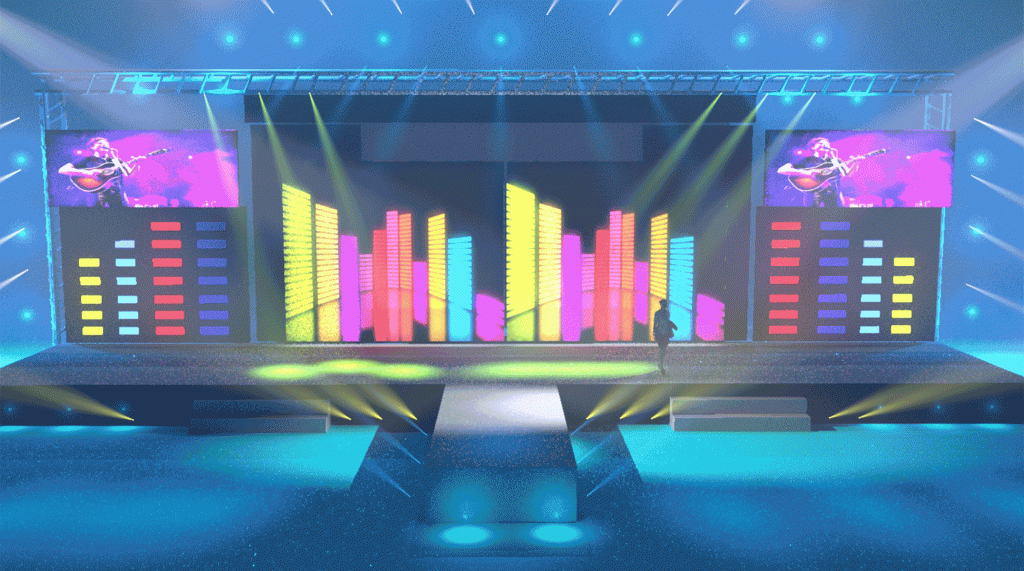Stage automation has revolutionized live performances, adding a dynamic edge to concerts, theater and entertainment productions. The integration of robotics into stage settings has not only enhanced visual appeal but also ensured greater precision, safety and creative flexibility. Let’s dive into the fascinating world of robotics in stage automation and explore how these innovations are transforming the live events industry.

The Rise of Robotics in Stage Design
The use of robotics in stage design is not entirely new, but recent advancements have pushed the technology to new heights. Robots have evolved from simple, repetitive machines to sophisticated systems capable of executing complex movements with remarkable precision. According to a report by MarketsandMarkets, the global stage automation market is expected to grow at a CAGR of 5.0% from 2023 to 2028, driven by the increasing demand for high-quality stage productions and immersive experiences. This growth is fueled by the ongoing adoption of robotics for enhanced stage control and dramatic effects.
Enhancing Visual Effects with Robotic Precision
Robotics have become essential in creating visually stunning effects that capture audience attention. One popular application is in moving stage platforms. Using robotic actuators, platforms can rise, tilt, rotate, and descend with split-second accuracy. This capability adds depth and dimension to performances, whether it’s a Broadway show or a concert stage. For instance, the 2019 Met Gala featured a 26-foot tall, robotic moving stage that created a mesmerizing display of shifting patterns and lights.
LED screens, lasers, and even pyrotechnics are often synchronized with robotic systems to create seamless transitions between scenes. This combination enables production designers to achieve precise timing and choreography, allowing performers to interact dynamically with the stage setup. Such precision and synchronization are crucial for preventing accidents and ensuring a smooth show flow.
Transforming Set Design with Automated Scenery
One of the most significant impacts of robotics is on set design and scenery changes. In traditional stage settings, large crews manually adjust scenery, resulting in lengthy intermissions. With robotics, these transitions happen almost instantaneously. Automated hoists and motorized winches can lift heavy props, curtains, and backdrops with minimal human intervention. This eliminates the need for large stage crews and reduces setup time, making it ideal for rapid scene changes in elaborate productions.
Disney’s stage production of Frozen on Broadway serves as an excellent example. The show uses automated winches to create the illusion of swirling snow and ice. The fluidity of these transitions would be impossible without robotics, demonstrating how automated systems contribute to the artistic narrative of a performance.

Improving Safety Standards with Robotics
Stage automation also enhances safety. Robots can handle heavy objects and hazardous props that would otherwise put stagehands and performers at risk. In large-scale concerts, such as those featuring artists like Beyoncé and U2, robotic arms are used to move heavy LED panels and lighting rigs, significantly reducing the likelihood of accidents. Additionally, automated systems are programmed with real-time feedback mechanisms, which can detect anomalies and prevent equipment malfunctions before they become hazardous.
A study conducted by the International Alliance of Theatrical Stage Employees (IATSE) highlighted that the use of robotics has reduced backstage injuries by nearly 25% since 2017. This makes robotics not only a tool for creative enhancement but also a critical component for maintaining high safety standards in stage productions.
Synchronizing Human Performance with Robotics
One of the most captivating aspects of stage automation is its ability to synchronize human and robotic movements. Robotic arms and drones are frequently used in tandem with performers, creating interactive shows that blend human artistry with mechanical precision. Companies like ABB Robotics have pioneered collaborative robots (or “cobots”) that work safely alongside humans, allowing for innovative choreography that integrates both performers and machines.
An excellent example is the Cirque du Soleil show Kurios. The production features robotic arms performing alongside acrobats, dancers, and musicians, creating an unforgettable experience that blurs the line between human talent and technological artistry. Such interactions captivate audiences and open new avenues for storytelling in live performances.
A Glimpse into the Future
As robotics continue to evolve, their role in stage automation will only expand. Future trends suggest the integration of AI-driven robots that can learn from performers’ movements and adapt in real time. This would enable unprecedented levels of interaction and spontaneity on stage. Additionally, advancements in motion capture and VR technology could allow stage designers to create “digital twins” of robotic systems, enabling precise planning and visualization before a production even begins.
While this technology is still in its infancy, companies like TLC Creative are already experimenting with these possibilities, pushing the boundaries of what’s achievable in stage automation.
Explore the Power of Robotics with TLC Creative
Stage automation is no longer just about moving set pieces; it’s about creating experiences that resonate with audiences on a deeper level. At TLC Creative, we specialize in leveraging cutting-edge robotics, AI technology, and special effects to elevate live events. Whether you’re planning a corporate event or a large-scale production, our team can help you bring your vision to life.
Contact us to learn more about how robotics and special effects can transform your next event.
By embracing robotics, productions can unlock new creative possibilities while ensuring precision and safety. The future of stage automation is here—don’t miss out on being a part of it.


